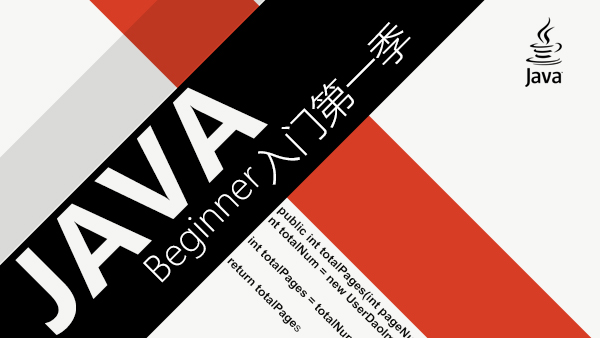10.1 死锁
哲学家问题
有环
A等B,B等A
数据库往往可以检测和解决死锁//TODO
JVM不行,一旦死锁只有停止重启。
下面分别介绍了几种典型的死锁情况:
10.1.1 Lock ordering Deadlocks
下面是一个经典的锁顺序死锁:两个线程用不同的顺序来获得相同的锁,如果按照锁的请求顺序来请求锁,就不会发生这种循环依赖的情况。
public class LeftRightDeadlock { private final Object left = new Object(); private final Object right = new Object(); public void leftRight() { synchronized (left) { synchronized (right) {
doSomething();
}
}
} public void rightLeft() { synchronized (right) { synchronized (left) {
doSomethingElse();
}
}
} void doSomething() {
} void doSomethingElse() {
}
}10.1.1 Dynamic Lock Order Deadlocks
下面的转账例子,如果一个线程X向Y转,而另外一个线程Y向X也转,那么就会发生死锁。
public class DynamicOrderDeadlock { // Warning: deadlock-prone!
public static void transferMoney(Account fromAccount,
Account toAccount,
DollarAmount amount)
throws InsufficientFundsException { synchronized (fromAccount) { synchronized (toAccount) { if (fromAccount.getBalance().compareTo(amount) < 0) throw new InsufficientFundsException(); else {
fromAccount.debit(amount);
toAccount.credit(amount);
}
}
}
} static class DollarAmount implements Comparable<DollarAmount> { // Needs implementation
public DollarAmount(int amount) {
} public DollarAmount add(DollarAmount d) { return null;
} public DollarAmount subtract(DollarAmount d) { return null;
} public int compareTo(DollarAmount dollarAmount) { return 0;
}
} static class Account { private DollarAmount balance; private final int acctNo; private static final AtomicInteger sequence = new AtomicInteger(); public Account() {
acctNo = sequence.incrementAndGet();
} void debit(DollarAmount d) {
balance = balance.subtract(d);
} void credit(DollarAmount d) {
balance = balance.add(d);
} DollarAmount getBalance() { return balance;
} int getAcctNo() { return acctNo;
}
} static class InsufficientFundsException extends Exception {
}
}解决办法还是顺序话锁,考虑针对两种情况取hashcode然后判断if-else里面决定锁顺序。
class Helper { public void transfer() throws InsufficientFundsException { if (fromAcct.getBalance().compareTo(amount) < 0) throw new InsufficientFundsException(); else {
fromAcct.debit(amount);
toAcct.credit(amount);
}
}
} int fromHash = System.identityHashCode(fromAcct); int toHash = System.identityHashCode(toAcct); if (fromHash < toHash) { synchronized (fromAcct) { synchronized (toAcct) { new Helper().transfer();
}
}
} else if (fromHash > toHash) { synchronized (toAcct) { synchronized (fromAcct) { new Helper().transfer();
}
}
} else { synchronized (tieLock) { synchronized (fromAcct) { synchronized (toAcct) { new Helper().transfer();
}
}
}
}10.1.3 在协作对象之间发生死锁Deadlocks Between Cooperating Objects
下面的例子setLocation和getImage都会获取两把锁,会存在两个线程按照不同的顺序获取锁的情况。
public class CooperatingDeadlock { // Warning: deadlock-prone!
class Taxi { @GuardedBy("this") private Point location, destination; private final Dispatcher dispatcher; public Taxi(Dispatcher dispatcher) { this.dispatcher = dispatcher;
} public synchronized Point getLocation() { return location;
} public synchronized void setLocation(Point location) { this.location = location; if (location.equals(destination))
dispatcher.notifyAvailable(this);
} public synchronized Point getDestination() { return destination;
} public synchronized void setDestination(Point destination) { this.destination = destination;
}
} class Dispatcher { @GuardedBy("this") private final Set<Taxi> taxis; @GuardedBy("this") private final Set<Taxi> availableTaxis; public Dispatcher() {
taxis = new HashSet<Taxi>();
availableTaxis = new HashSet<Taxi>();
} public synchronized void notifyAvailable(Taxi taxi) {
availableTaxis.add(taxi);
} public synchronized Image getImage() {
Image image = new Image(); for (Taxi t : taxis)
image.drawMarker(t.getLocation()); return image;
}
} class Image { public void drawMarker(Point p) {
}
}
}10.1.4 开放调用
减小锁的力度,锁不嵌套。
class CooperatingNoDeadlock { @ThreadSafe
class Taxi { @GuardedBy("this") private Point location, destination; private final Dispatcher dispatcher; public Taxi(Dispatcher dispatcher) { this.dispatcher = dispatcher;
} public synchronized Point getLocation() { return location;
} public synchronized void setLocation(Point location) { boolean reachedDestination; synchronized (this) { this.location = location;
reachedDestination = location.equals(destination);
} if (reachedDestination)
dispatcher.notifyAvailable(this);
} public synchronized Point getDestination() { return destination;
} public synchronized void setDestination(Point destination) { this.destination = destination;
}
} @ThreadSafe
class Dispatcher { @GuardedBy("this") private final Set<Taxi> taxis; @GuardedBy("this") private final Set<Taxi> availableTaxis; public Dispatcher() {
taxis = new HashSet<Taxi>();
availableTaxis = new HashSet<Taxi>();
} public synchronized void notifyAvailable(Taxi taxi) {
availableTaxis.add(taxi);
} public Image getImage() {
Set<Taxi> copy; synchronized (this) {
copy = new HashSet<Taxi>(taxis);
}
Image image = new Image(); for (Taxi t : copy)
image.drawMarker(t.getLocation()); return image;
}
} class Image { public void drawMarker(Point p) {
}
}
}1.0.15 资源死锁
数据库连接池,A持有数据库D1连接,等待与D2连接,B持有D2的连接,等待与D1连接。
线程饥饿死锁,如8.1.1小节的例子。
10.2 死锁的避免与诊断
10.2.1 支持定时的锁
tryLock
10.2.2 kill -3 发信号给JVM dump线程
10.3 其他活跃性危险
10.3.1 饥饿
10.3.3 活锁Livelock
他不会阻塞线程,但是也不能继续执行,因为线程在不断的重复执行相同的操作,而且总会失败。
例如处理事务消,回滚后再次重新把任务放在队头。
又例如发送数据包,都选择1s后重试,那么总会冲突,所以可以考虑一个随机数时间间隔。
作者:芥末无疆sss
链接:https://www.jianshu.com/p/1f697e0d1566
來源:简书
简书著作权归作者所有,任何形式的转载都请联系作者获得授权并注明出处。

 随时随地看视频
随时随地看视频



